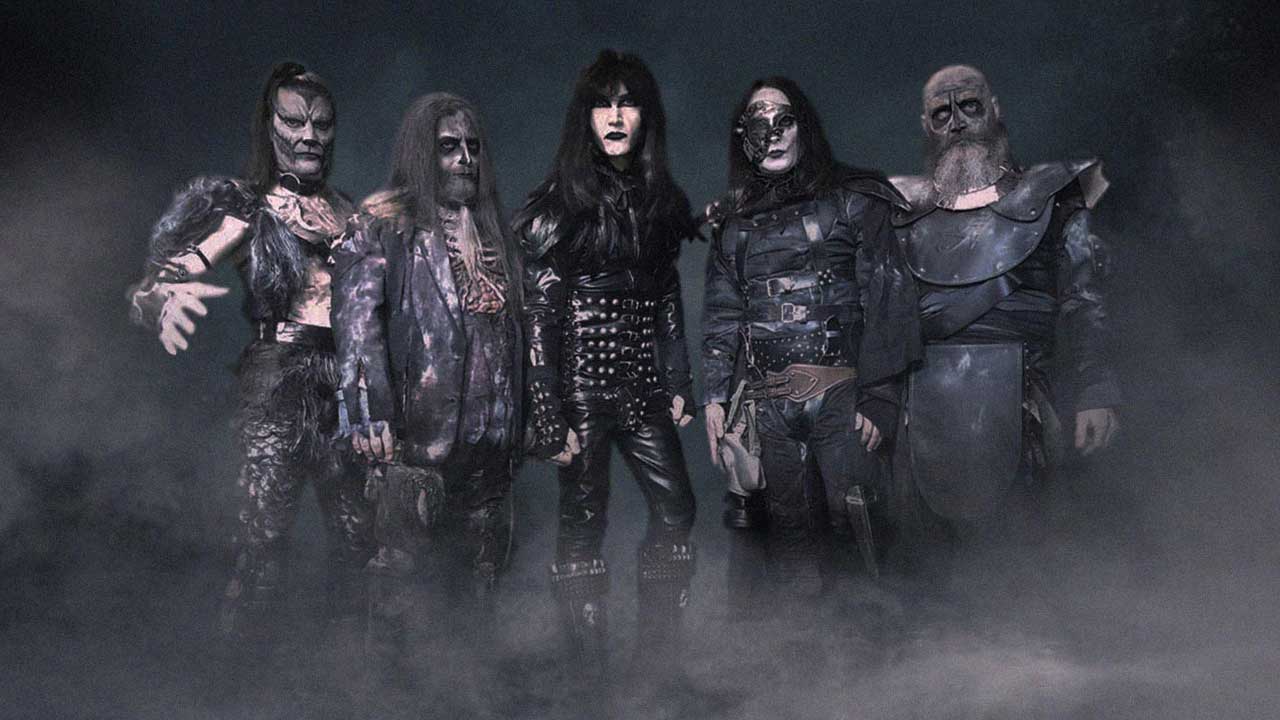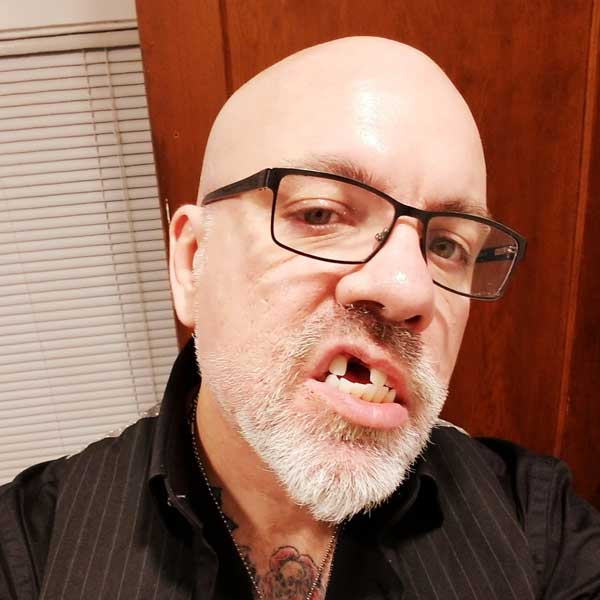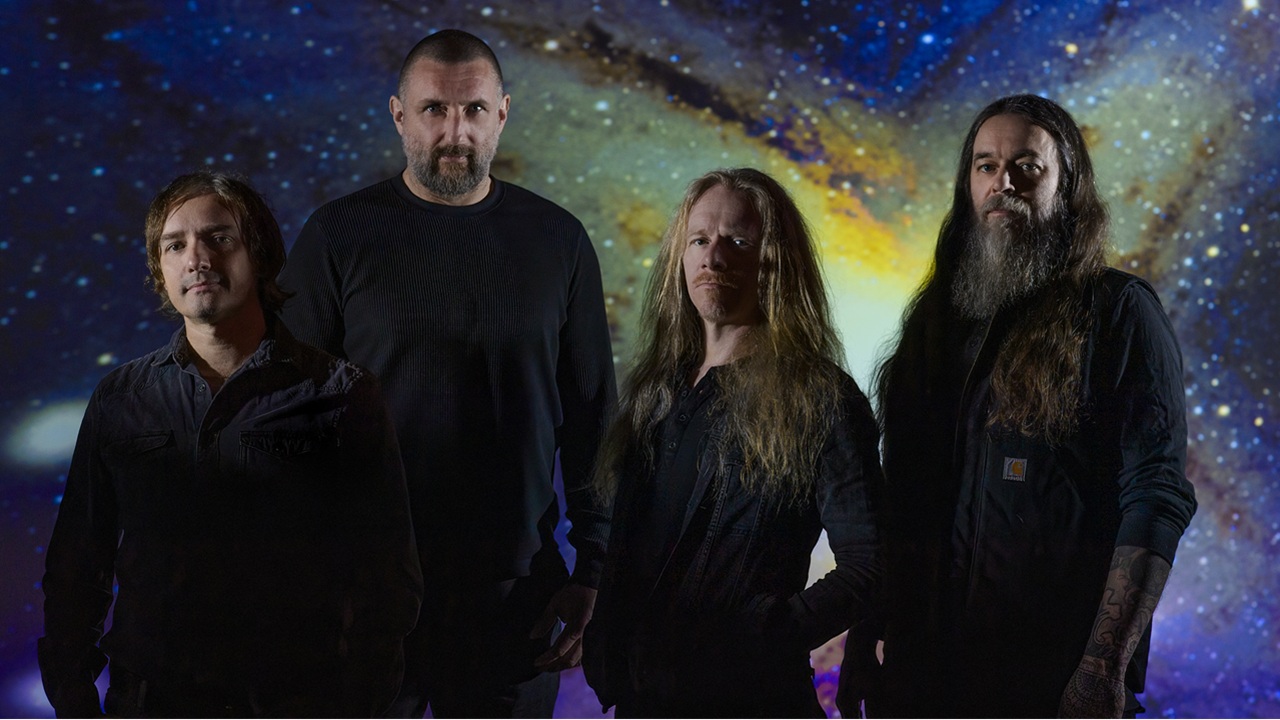"A guy in a wheelchair calmly eating live locusts out of a cigar box": five shock rock bands from the 1970s you should definitely know
Celebrating a smattering and a splattering of shock rockers from the earliest, weirdest days of the genre: some survive to this day

Notorious excrement-spraying punk loony GG Allin often referred to himself as the “blood and guts of rock’n'roll”. That wasn’t really true. He was more the “puke and piss” than anything else.
Still, more than most, he understood that outrage was one of rock’s most lethal weapons. The will to provoke and the grand-guignol theatricality of performance has always been a part of the rock spectacle, from the coffin-popping antics of Screaming Jay Hawkins to the fiery headgear of Arthur Brown, from the serial suicides of Alice Cooper to the blood spitting kabuki theatre of Kiss.
Shock rock is rock’n'roll at its most gleefully demented, a place where monsters run free and sometimes play guitars, where topless women blow up cars, mutant ghouls chomp on raw meat, hapless audience members are fed to hungry space-maggots, and dope-smacked singers roll around in broken glass. It’s hell with the lid off, set to a 4/4 beat.
Given the easily exploitable nature of shock rock, most of its practitioners are well known: Plasmatics, GWAR, Marilyn Manson, W.A.S.P., Dwarves, Rammstein. But throughout the decades, bubbling just under the surface, a small army of equally envelope-pushing lunatics raged the stages, all of ‘em just as confident as GG that their gut-spilling hijinks would live on in infamy.
Sadly, these fevered dreams often fizzled, and the annals of rock are littered with the husks of makeup-smeared provocateurs who never got the chance to terrorise the populace at large.

Death SS
Steve Sylvester was an Italian Aliester Crowley enthusiast and member of Crowley’s secret sect, the Order Templi Orientis. Along with doom-rock guitar legend Paul Chain, he formed Death SS in 1977.
Calling their particular style of raunchy creep rock ‘horror music’, Death SS dressed up like monsters and skeletons, draped their stages with skulls and tombstones, and choked the audience with enough dry ice to last a dozen spaghetti splatter flicks.
Sign up below to get the latest from Classic Rock, plus exclusive special offers, direct to your inbox!
Like a lot of 70s shock rockers, they didn’t get around to recording until the 80s, releasing their first single, Zombie, in 1982. They have existed, in one form or another, ever since, although Sylvester is usually the only original member on deck.
The unsung heroes of early black metal – and an inspiration to Ghost, who they supported in May 2023 – Death SS are rarely mentioned in the same breath as their obvious (and more respected) peers like Mercyful Fate, Hellhammer or Bathory. This may be because they’re ridiculous, but when has that even been a detriment to heavy metal?
The Sic Fucks
Tish and Snooky Bellomo were twisted sisters who performed in various burlesque and drag revues during the glam era in NYC. They graduated to punk rock in 1975 when they joined Blondie as back-up singers. In 1977, with a $500 loan from their mom, they opened the Manic Panic boutique at St Mark’s Place in New York City, where they sold their own brand of brightly-colored hair dye. Manic Panic has since become a mini empire and the scourge of uptight parents. Also in ’77, they were asked by their pal Russ Wolinsky to join his one-night only band, The Sic Fucks.
Tish and Snooky dressed as slutty nuns, they sang songs about chopping up your mother, teenage abortions, and doing drugs, and there was blood and giant meat cleavers everywhere. It was pure punk rock spectacle, designed to freak out the squares and send the rubes screaming for the exits. The one-off band quickly became a local institution, and for years, the Sic Fucks were must-see staples at CBGB’s and Max’s Kansas City.
Sadly, their early years went mostly undocumented and unrecorded, and they didn’t release a record until 1982. Their-self titled debut EP – their only studio release to date – captures the band’s signature glam-punk party sound, and includes two of their most way-out numbers, Chop Up Your Mother and Insects Rule My World. Also in 1982, the band appeared in the dark comedy/slasher flick Alone In The Dark, about a trio of escapees from a psychiatric hospital who terrorize a local town. Unfortunately, the band broke up soon after, presumably because hair dye is more profitable than theatrical glam-punk.
The band still reunite pretty regularly though, so if you ever wander into a dive-bar in NYC and find a bunch of aging nuns with purple hair chasing audience members around with cardboard axes, you’ll know the Sic Fucks are at it again.
Bitter Blood Street Theatre
Bitter Blood Street Theatre was a performance art troupe-slash-acid rock band from Cincinnati active in the early 1970s. Their music was a swirling dervish of bong-hitting psychedelia with slashing hard rock guitars and a penchant for exotic instrumentation, including a few saw solos.
The band were colourful kooks in Kiss-style masks, draped in capes and/or dominatrix outfits, and the ‘street theatre’ bit involved exactly that: extras culled from the local freak scene who would perform on stage with the band, or in the audience, or out on the sidewalk in front of the club. Performances would range from a guy in a wheelchair calmly eating live locusts out of a cigar box, to flashers showing their private bits to whomever caught their eye.
The band played with all the heavy-hitters of the era and the area, from The MC5 to Alice Cooper (who, some believe, nicked a thing or two from Bitter’s stage performance), but never made any headway beyond Ohio’s borders. In 1975, the band were briefly part of the Columbia Records roster, but the exec who signed them was reportedly fired the same day, and the band was unceremoniously dropped.
They did manage to eke out one single in ’75, but the band broke up soon after, morphing into still-active ‘fringe-rock’ outfit, Blacklight Braille. In the late 70s, BBST mainman Tom Owen was able to cobble together the band’s various demo tracks and release them as a two-volume anthology. Both are now considered minor masterpieces of 70s weird-psyche. Sadly, no vintage footage of the band has surfaced yet, so we are left to imagine what it might be like to catch these pioneering maniacs live.
Zior / Monument
Like Bitter Blood, Zior’s notorious stage show went undocumented, and exists now only as wispy memories for the few brave souls who witnessed it. There is talk of black masses and mass hypnosis, of blood sacrifice, dark ritual and eerie incantations. Certainly, the band – ex-R&B stompers from Southend-on-Sea – never denied a serious and heavy interest in the occult, and there is clearly a demonic haze clinging to their slim but eventful discography.
Their self-titled debut was released in 1971, complete with a suitably creepy, blood-red cover care of Keef, the artist also responsible for the first Black Sabbath album sleeve. The songs are not as heavy as Sabbath, but they’re just as sinister, and the serpentine groove of songs like Za Za Za Zilda are positively narcotic.
Also in ’71, they released another album under the alternate moniker of Monument. The First Monument is a collection of acid-belching pychedelia reportedly recorded in one drunken all-night session. It sounds like one long, groovy Satanic mass, which it probably was.
Despite the devil-borne headwinds Zior rode in ’70-’71, the band dissolved a year later. It was not the forces of good or evil that did ‘em in, however. Rather, it was the usual banalities of 70s rock: music-biz tomfoolery causing acrimony, then bankruptcy.
Coven
Much like Zior, Chicago’s Coven were a band that had an authentic interest in the occult. In fact, their debut album, 1969′s Witchcraft Destroys Minds And Reaps Souls, is still the most overtly Satanic record album ever released, and clearly paved the way for 80s black metal.
Consider the evidence. The band signed their contract with Mercury records in their own blood. The first song on the album is called Black Sabbath (coincidentally, their bass player was named Oz Osbourne!). The inside gatefold features a photo of a gorgeous blonde woman (not, as is often assumed, Coven’s gorgeous blonde frontwoman, Jinx Dawson) lying naked on an altar, surrounded by the band, who are wielding upside down crosses. On the back cover, the band are throwing the goat horns, years before Ronnie James.
The songs – acid rock-y in the Jefferson Airplane vein – are as lyrically demonic as anything King Diamond ever conjured up. The album ends with a 15-minute recording of an ‘authentic’ black mass that the liner notes warn the listener not to listen to, unless they’re prepared to deal with whatever horrors might await them afterward. Hell, even the blood-red font on the album was later appropriated by Venom and Witchfinder General!
Not surprisingly, the album was pulled from the shelves shortly after its release, when the Mercury label was pressured by an article in Esquire magazine that tenuously linked the Manson murders with California’s burgeoning interest in all things occult, including Coven. Looking back, it still seems incredible that a major label would release such a controversial album in the first place.
The album’s withdrawal naturally hobbled the band’s momentum, although they scored a surprise hit in 1971 when their folky protest song One Tin Soldier was used as the theme for popular revenge flick Billy Jack. The band fizzled a few years later, and Jinx went on to an acting career. She resurfaced recently to fly Coven’s black flag once more, and remains as bewitching and unrepentent as ever.
Came from the sky like a 747. Classic Rock’s least-reputable byline-grabber since 2003. Several decades deep into the music industry. Got fired from an early incarnation of Anal C**t after one show. 30 years later, got fired from the New York Times after one week. Likes rock and hates everything else. Still believes in Zodiac Mindwarp and the Love Reaction, against all better judgment.

